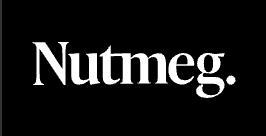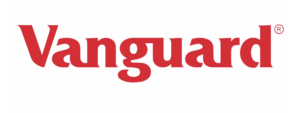
This article compares the performance of the best fully-managed Stocks & Shares ISAs from Moneyfarm*, Nutmeg, Wealthify and Vanguard. In this article, we primarily focus on the returns over the last five years for which we provide an easy-to-read summary table below. However, we do also look at performance over longer time frames, where a product has a sufficient track record to allow us to do so, throughout this article. But do bear in mind that past performance is not a guide to future returns.
1 minute summary - Which is the best performing stocks and shares ISA?
- The ISA allowance for the current tax year (2024/25) is £20,000
- There are different types of stocks & shares ISA depending on how involved you want to be in choosing and managing your investments
- You can choose between a true DIY ISA, a part-managed ISA or a fully-managed ISA where the investment management is done on your behalf
- This article focuses on fully-managed ISAs so that we can compare past performance
- We've compared the performance of Moneyfarm*, Nutmeg, Wealthify and Vanguard for 2023, 2022, 2021, 2020 and 2019 calendar years
- We also explain why those looking at Vanguard may want to consider Interactive Investor* if they have more than £96,000 to invest
What is a Stocks & Shares ISA?
A stocks & shares ISA is a type of savings vehicle that allows you to invest in funds or stocks while protecting any investment returns you make within the tax wrapper meaning you don’t pay capital gains tax or income tax on any profits or income earned. The ISA allowance for the current tax year (ending on 5th April 2025) is £20,000.
There are different types of Stocks and Shares ISA available depending on how involved you want to be in the investment selection and management, and these will each come with different charges. You can choose a true DIY ISA, a part-managed ISA or a fully-managed one where the investment management is done for you, but you will pay higher fee for this. This article focuses on fully-managed ISAs so that we can compare performance. For more information on the different types of ISA available, read our article ‘Where should you invest you ISA allowance?'
You can transfer money held in other types of ISA (a Cash ISA, for example) into a Stocks & Shares ISA and it won’t count towards your annual ISA allowance as long as you paid into the existing ISA during a previous tax year. You can find more details on this in our article ‘ISA transfers explained‘.
For a more general discussion on whether a Stocks & Shares ISA is worth holding, read our article ‘Are stocks and Shares ISA's worth it?‘
12 months Fee-Free Investing
Open an ISA, Junior ISA, Pension or General Investment Account with Moneyfarm and...
- Pay no management fee for 12 months
- Minimum investment of £500
- New customers only. UK residents, 18+
- T&Cs apply. Capital at risk.

Managed Stocks and Shares ISA performance – 5 year comparison table
Below, we rank the best-performing Stocks and Shares ISA portfolios that are fully-managed. The table is ranked by the annualised return (after fees are taken) over the last 5 calendar years. Bear in mind that investing comes with risk and markets can move quickly, as has played out in recent years, so there is no guarantee that the top performers over the last five years will remain so in years to come. Plus, the risk level of the portfolio you choose will depend on how much focus there is on protecting your capital from losses rather than making as much as possible in rising markets. The greater the portfolio's stated exposure to equities the greater the level of investment risk being taken. When looking at the performance data below don't just focus on the annualised 5 year return. Look at how the portfolios have performed in each calendar year including 2022 when equity and bond markets tumbled. While in many cases 2023's performance number may look impressive, only the Wealthify Adventurous Portfolio recouped all of the losses from 2022 by the end of 2023.
While you may be looking for the best-performing Stocks & Shares ISA, there are other factors that you should consider when selecting a product. This might include factors such as price, asset mix, minimum investment, quality of customer service, investment and product choice, and the options to view and manage your portfolio – whether through an app or a user-friendly website. Check out our article ‘The best stocks and shares ISA (& the cheapest fund platform)‘.
| 5 year annualised return | Portfolio's exposure to equities % | Platform fees¹ | 2023 return | 2022 return | 2021 return | 2020 return | 2019 return | |
| Moneyfarm Ethical (risk level 6)* | 7.33% | 68.10% | £130 | 11.00% | -15.30% | 14.90% | 12.10% | 17.60% |
| Wealthify SRI (Adventurous Portfolio) | 7.04% | 75.55% | £120 | 13.60% | -18.50% | 14.70% | 13.40% | 16.70% |
| Wealthify (Adventurous Portfolio) | 7.03% | 69.74% | £120 | 11.30% | -9.10% | 12.80% | 5.10% | 17.10% |
| Moneyfarm (risk level 6)* | 6.79% | 69.60% | £130 | 11.50% | -11.70% | 13.90% | 6.30% | 16.50% |
| Nutmeg SRI (Portfolio 7) | 6.48% | 73.88% | £150 | 11.20% | -15.50% | 13.70% | 9.30% | 17.20% |
| Moneyfarm Ethical (risk level 5)* | 6.29% | 58.30% | £130 | 10.20% | -14.20% | 12.10% | 10.90% | 15.40% |
| Nutmeg (Portfolio 7) | 6.14% | 73.82% | £150 | 10.40% | -11.60% | 12.70% | 6.40% | 15.10% |
| Vanguard LifeStrategy 60% Equity | 5.96% | 60.00% | £30 | 10.14% | -11.22% | 9.93% | 7.84% | 15.24% |
| Wealthify (Ambitious Portfolio) | 5.51% | 52.30% | £120 | 9.40% | -9.40% | 9.70% | 5.10% | 14.40% |
| Moneyfarm (risk level 5)* | 5.49% | 58.30% | £130 | 10.30% | -11.50% | 11.30% | 4.90% | 14.60% |
| Wealthify SRI (Ambitious Portfolio) | 5.33% | 56.66% | £120 | 11.00% | -17.20% | 11.20% | 11.20% | 14.10% |
| Nutmeg SRI (Portfolio 6) | 5.31% | 63.86% | £150 | 10.50% | -15.90% | 10.70% | 9.40% | 15.10% |
| Nutmeg (Portfolio 6) | 4.77% | 63.84% | £150 | 9.70% | -12.60% | 9.90% | 6.20% | 12.80% |
¹ Fees are per annum, based on a £20,000 investment (Does not include fund costs)
No management fee for 12 Months
Open or transfer a Stocks and Shares ISA, Junior ISA or Pension to our partner Wealthify.
- Pay no management fees for the first 12 months
- New customers only
- T&Cs apply, Capital at risk

Which is the best performing Stocks & Shares ISA?
For the purpose of this article, we have compared the performance of the best fully-managed portfolios from four of the most popular UK robo-advisers. Remember, however, that past performance is not a guide to future returns.
Wealthify performance 
Wealthify operates similarly to most other services that offer fully managed ISAs, using an automated process to construct portfolios that match clients’ risk tolerances, while using cheap mutual funds and ETFs to keep costs down. Its investment team continuously monitors and rebalances client portfolios to keep them in line with the stated risk level.
Wealthify has five ‘original' Stocks & Shares ISA portfolios as well as five ‘ethical' Stocks & Shares ISA portfolios. Wealthify’s annualised return over the last 5 years was 5.51% for its ‘Ambitious' portfolio and 7.03% for its ‘Adventurous' portfolio. The equivalent ethical portfolios produced an annualised return of 5.33% and 7.04% over the last 5 years.
Wealthify charges a management fee 0.60% for its ISA, General Investment Account and Junior ISA (the above performance figures are after the fee has been deducted).
Nutmeg performance 
Nutmeg offers a range of 10 risk-graded model portfolios to choose from, depending on how much risk you are willing to take. Nutmeg establishes your risk tolerance by asking you a series of questions and then recommends a portfolio it thinks will suit you, from ‘Cautious’ to ‘Aggressive’. The portfolios contain low-cost exchange-traded funds (ETFs) diversified across assets, countries and sectors and Nutmeg regularly reviews asset allocation on its fully managed products to keep them in line with your goals and risk profile.
Let’s say you went for portfolio number six, in the middle of the pack, offering ‘moderate growth without extreme volatility’. Over the five years, the annualised return was 4.77%, which is slightly below the return you would have experienced with the equivalent portfolios from its competitors Moneyfarm and Wealthify. Nutmeg also has a range of Socially Responsible Investment (SRI) portfolios, often referred to as ‘ethical' or ‘sustainable' investment portfolios and the equivalent ethical portfolio achieved an annualised return of 5.31%.
Looking across Nutmeg’s whole range, comparative performance is better in the higher risk portfolios. Portfolio number seven has an annualised return of 6.14% and its ethical equivalent has an annualised return of 6.48%.
Nutmeg’s investment performance figures are based on an account size of £25,000, and are calculated after fees, using data from actual trades rather than averages.
Nutmeg calculates the performance of its competitors using averages, after fees, from a range of discretionary investment managers including Coutts, UBS and Rathbones (rather than the other robo-advisers we refer to in this article).
In terms of fees, you pay between 0.35% and 0.75% for the fully managed and socially responsible portfolios, depending on the amount you have to invest, and between 0.25% and 0.45% for Nutmeg's fixed allocation portfolios.
There are also fees charged by the underlying funds in robo portfolios (that goes for all of the propositions mentioned in this article and not just Nutmeg), usually of around 0.20%.
Money to the Masses readers can also take our advantage of our exclusive offer where Nutmeg will waive all management fees for the first 12 months. For more details read our independent ‘Nutmeg review‘ which also explains more about their overall offering, including investment performance.
Moneyfarm performance 
Moneyfarm uses a questionnaire to assess your investing experience, risk tolerance and investment goals, and then recommends a portfolio tailored to you, which is classed as regulated financial advice. Moneyfarm constructs a portfolio of ETFs based on its own investment research, and uses volatility targeting when doing your asset allocation, It rebalances portfolios about every three months. As it is giving advice, every year Moneyfarm has to review your portfolio to make sure it is still suitable.
Its medium risk portfolio, risk Level 6 out of 7, has an annualised return of 6.79%, while its ethical equivalent tops our performance table with an annualised return of 7.33%. Moneyfarm charges a management fee of between 0.35% and 0.75% depending on the size of your investment, and a £25,000 pot would set you back £130 a year in fees. However, Money to the Masses readers can take advantage of an exclusive Moneyfarm offer where your portfolio could be managed for FREE FOR THE FIRST YEAR*.
Read our detailed independent Moneyfarm Review.
Vanguard performance 
Vanguard is one of the largest players in the investment fund space, offering both active and passive funds, although it made its name offering low-cost index tracker funds. Of interest to us here are its LifeStrategy funds, available through its Vanguard Investor platform. LifeStrategy funds are ready-made portfolios of Vanguard index tracker funds, and they tend to have a US equity focus. They come in five different mixes of stocks and bonds, labelled according to their equity allocations.
The LifeStrategy 60% Equity fund sits in the middle of the range, aiming for long-term returns with controlled risk and it has an annualised return of 5.96% over the last five years.
In terms of fees, the total charge including platform fee on a £20,000 ISA investment would be 0.37% if you bought LifeStrategy through Vanguard’s own platform, Vanguard Investor. It is worth mentioning that if you have more than £96,000 to invest, one of the cheapest ways to buy Vanguard funds is via the Interactive Investor* platform, not directly through Vanguard Investor. For more on this tip and for detailed information about Vanguard and its product range and pricing read our full independent ‘Vanguard Investor UK review‘.
Conclusion
Most of the analysed Stocks and Shares ISAs have limited performance data available, but we do now have at least 5 years of data to compare.
The performance figures provided in this article take into account the costs charged by each ISA provider. The figures should be viewed in the wider context of the longer-term performance figures which you can find on each provider's website. Also bear in mind that past performance is no guarantee of future returns.
However, there have been some standout performers when looking at the table above. For example, the Wealthify Adventurous Portfolio is the only portfolio to fully recover from the losses of 2022. It is important to look at how portfolios have fared in strong market conditions (such as 2021) but also in tough market conditions (such as 2022).
Elsewhere, Moneyfarm Ethical (risk level 5)* has outperformed a number of competitors' portfolios that have a higher equity exposure, meaning that they are taking more investment risk for less return.
It is important to not just focus on past performance when choosing a managed stocks and shares ISA. You should also consider costs, investment and product choice, the portfolio asset mix, minimum investment and customer service
If a link has an * beside it this means that it is an affiliated link. If you go via the link Money to the Masses may receive a small fee which helps keep Money to the Masses free to use. But as you can clearly see this has in no way influenced the above editorial. The following links can be used if you do not wish to help Money to the Masses or take advantage of the exclusive Money to the Masses offers – Moneyfarm, and Interactive Investor.









